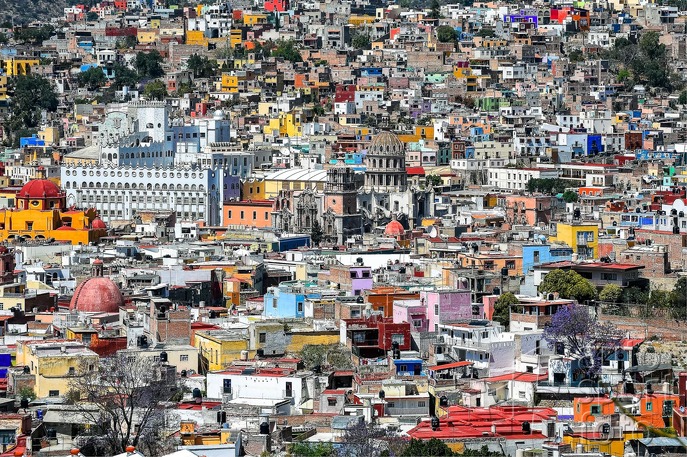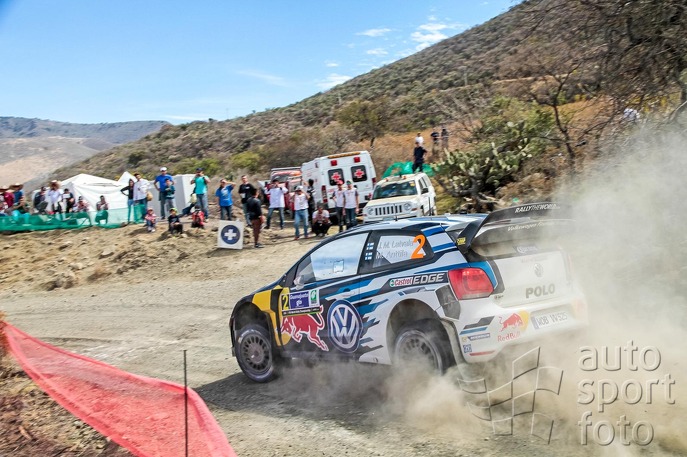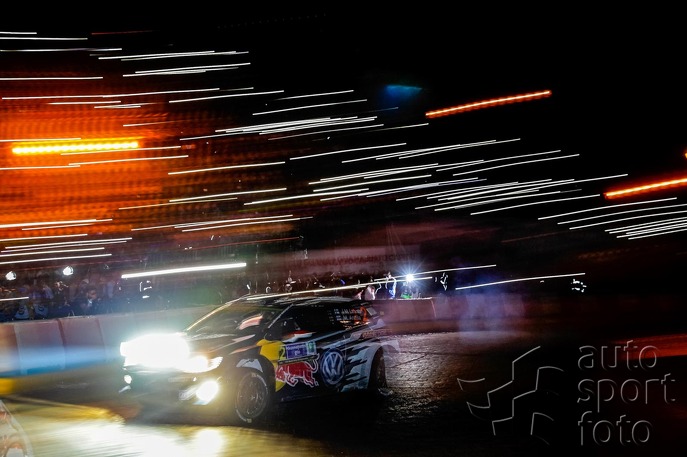The special stages in detail

SS 3: Seb defends narrow lead.
A gripping dust battle is hotting up: The third special stage (Los Mexicanos), which kicked off Friday's rally action, was closely contested. Leader Sébastien Ogier got the third-fastest time on the section covering just under ten kilometres and was just about able to defend his overall lead. However, with a deficit of just two tenths of a second, Thierry Neuville (Hyundai) is virtually in the Volkswagen man's slipstream. Britain's Kris Meeke (Citroën) got the best time. Ogier's team-mates Andreas Mikkelsen and Jari-Matti Latvala are in fourth and fifth place in the overall standings.

SS 4: Ogier with a magical time - lead extended considerably.
Wow, what a strong performance from the World Champion! The Frenchman was unbeatable on the 44 kilometres of the second-longest section of the Rally Mexico, "El Chocolate". Pursuer Thierry Neuville couldn't keep up with his pace and dropped back by more than 13 seconds. Even Mads Østberg, who got the second-fastest time was almost nine seconds slower. While things are going great for Séb, team-mate Latvala is struggling with the conditions: "It's incredible how slippery it was. I'm not at all happy with our performance," said the annoyed Finn at the finish line. Latvala lost more than ten seconds off the top, but is now in third place overall after Citroën driver Kris Meeke retired. Andreas Mikkelsen is in fifth.
Like wearing a snorkel to run a marathon.
In the Mexican altitude the turbo engines lose about a quarter of their power. Without the skills of the engineers the loss would be greater.

Léon in Mexico, 06 March. The sun beats down on the service park, the thermometer registers 25 degrees Centigrade in the morning. The contrast with wintery central Sweden where the WRC was held just three weeks ago couldn't be much greater. However, another difference is only noticeable on closer inspection - the altitude. While Karlstad is practically at sea level, the altimeter in Léon registers more than 1,800 metres.
The contrasts in temperature and air pressure mean that the WRC events in Sweden and Mexico make for the two extremes in terms of engine performance. Cold air with plenty of oxygen and high air pressure at sea level - almost perfect conditions for a turbo engine in a World Rally Car. The 1.6-litre four-cylinder engine in the Polo R WRC gives its drivers around 320 hp in these conditions. Not much of this makes it to Mexico, where the cars drive at altitudes that are almost always above 2,000 metres, and go up to just over 2,700 metres. "In the sections at the highest altitudes the engines lose about 28 to 30 percent of their power compared with the Rally Sweden," explained Donatus Wichelhaus, head of engine development at Volkswagen Motorsport.

It goes without saying that the engineers counter this with a specially developed program for the engine electronics. However, restrictive factors include the maximum permitted boost of 2.5 bar, the amount of fuel injected into the engine with each cycle that is reduced as a result of the lower percentage of oxygen in the air and the mandatory air restrictor in the intake passage. The air restrictor has a diameter of just 33 millimetres. "That's like a marathon runner having to breathe through a snorkel," described Wichelhaus.
At the same time, the lower air resistance in the turbocharger means that the paddle wheels that rotate at around 150,000 revolutions per minute reach higher speeds than at other rallies. However, the turbocharger is a mandatory standard component stipulated by the regulations, and isn't even allowed to be modified for the Rally Mexico. Once again the engine electronics ensure that the charger doesn't sustain any damage despite the extreme pressure.

Test drives outside of Europe are banned in the World Rally Championship. That's why the engineers rely on simulations in their own engine test bench and even more so on past experiences. This gives Volkswagen Motorsport the perfect position. Sébastien Ogier (Polo R WRC #1) has won the Rally Mexico in the previous two years.
The World Champion and his team-mates Jari-Matti Latvala (Polo R WRC #2) and Andreas Mikkelsen (Polo R WRC #9) can rely on their cars even at altitudes of up to 2,700 metres. In comparison: Germany's highest mountain, Zugspitze, is not even 300 metres higher. But you won't find any rally tracks up there.
Diskusia k článku
Najnovšie galérie
































 Christopher
Christopher 
 Petter
Petter 
 Conrad
Conrad 
 Francois
Francois 
 Henning
Henning